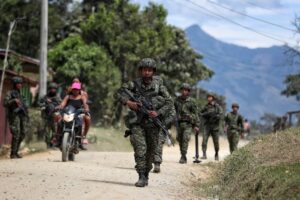
After the epidemic, observations: more than 400 animals have been slaughtered in the Pyrénées-Orientales since the beginning of October, due to an outbreak of the contagious lumpy skin disease. Farmers can of course obtain compensation from the State, but the State will compensate their animals “piece by piece”. However, the true cost of losing these animals is much greater.
To try to make a difference, the Catalan Breeders’ Cooperative launched a prize pool on the Leetchi website on November 19, with the hope of raising 50,000 euros.
The losses that must be compensated for are caused by the summer pasture farming system that is commonly used for slaughtered animals. As in many other mountainous areas, when good weather arrives, usually in June, the Pyrénées-Orientales herds move to highland pastures where they will find the grass necessary for their diet until the first peak of autumn. In these summer pastures, animals most often navigate independently, as they have learned to manage there.
The impact was felt for several years
With their disappearance, part of the herd’s history has been lost. A story that will not be easy to reconstruct. “For a herd to become independent, it takes about ten or fifteen years, and this is a long apprenticeship,” emphasizes Guillaume Husson, a breeder in Nyer (Pyrénées-Orientales), where 18 of his animals were slaughtered due to lumpy skin disease.
He and his colleagues are also considering hiring a second cowherd next year, to guide the new cows. “Of course, the State will compensate the affected breeders. That is good, but it will not be enough, because it is only short-term. Our region is very special, the animals will need a long time to adapt to the system, to our summer pastures, two or three years with reduced production and therefore economic losses for the breeders. Losses that will not be compensated by the compensation provided,” said Olivier Gaurenne, president of the cooperative.
Breeders also have to deal with emergencies, namely marketing animals that cannot be exported as usual. Olivier Gaurenne estimates that there are between 400 and 500 cows trapped in this health effort: “We are trying to get them into the local sector, so that there is space in the pens to accommodate the cows and so that they can give birth in good conditions. »





